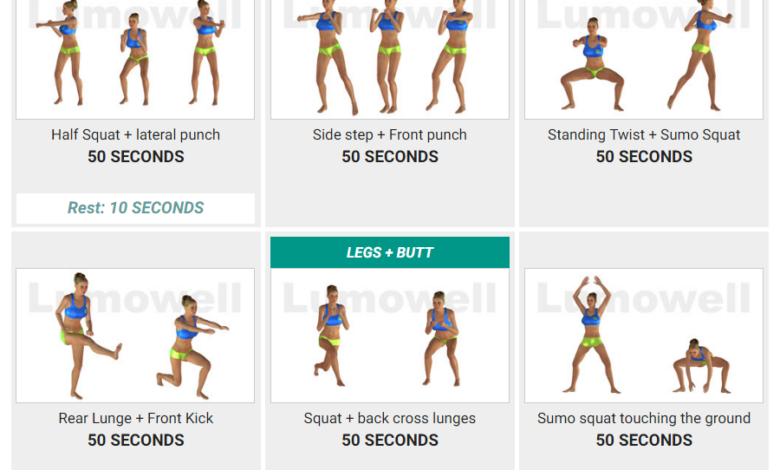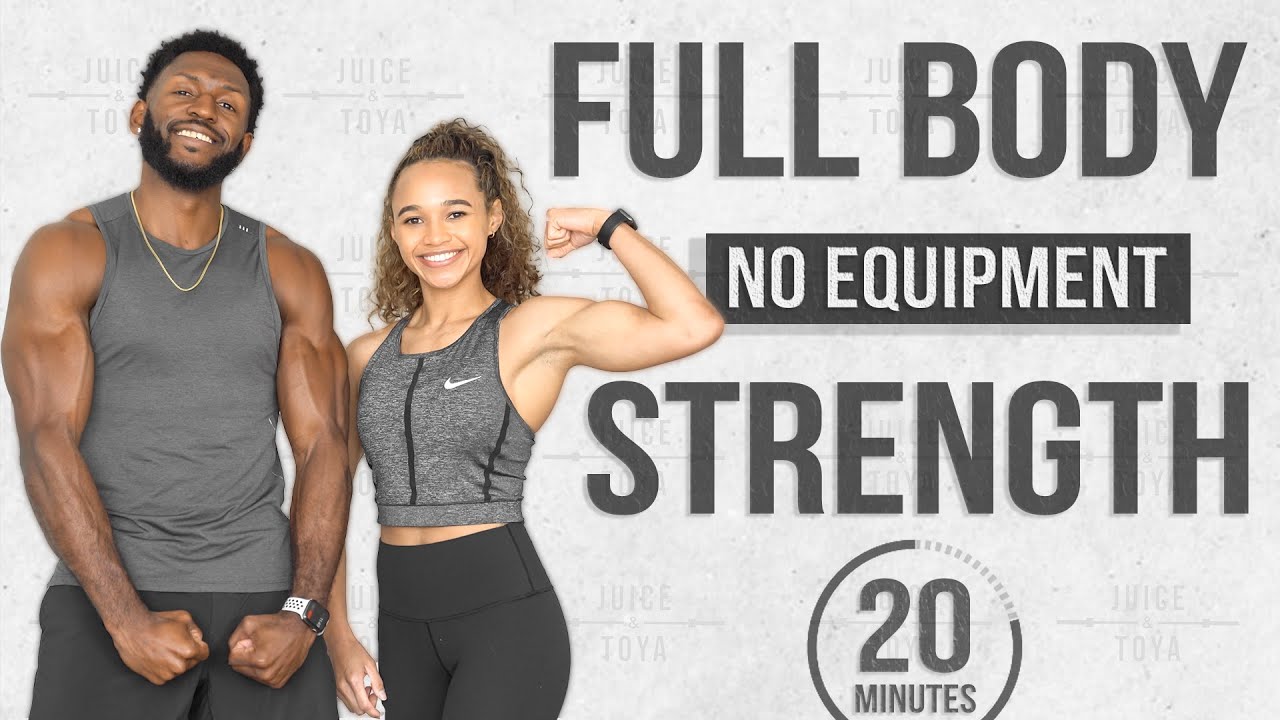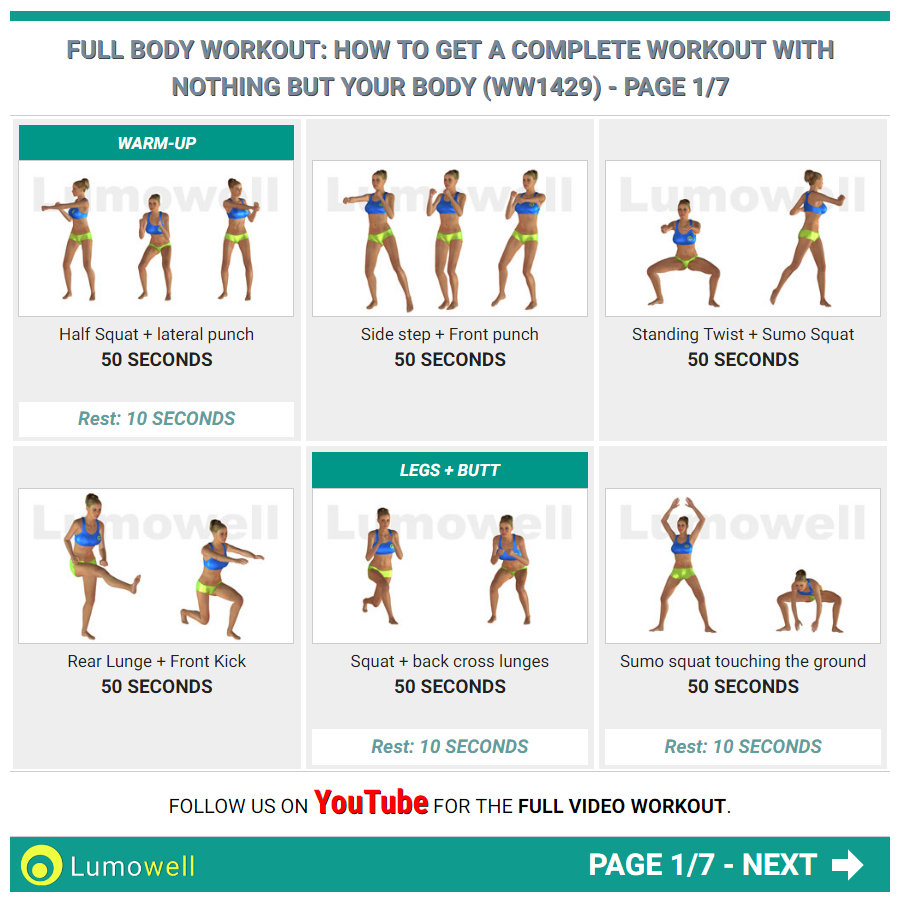
10 Minute No Equipment Total Body Workout: Get Fit Anywhere
10 Minute No Equipment Total Body Workout: Who says you need a gym membership or fancy equipment to get a great workout? This routine is perfect for busy people who want to squeeze in a quick and effective workout anywhere, anytime.
No matter your fitness level, you can adapt this workout to fit your needs, and it’s all about making the most of your bodyweight.
This workout is designed to be a quick and efficient way to get your heart rate up and work all the major muscle groups in your body. We’ll focus on compound exercises, which work multiple muscle groups at once, maximizing your results in a short amount of time.
Introduction
Craving a quick and effective workout that fits into your busy schedule? Look no further than this 10-minute no-equipment total body routine! This workout is designed for individuals of all fitness levels, from beginners to seasoned athletes. Whether you’re short on time or lack access to a gym, this routine offers a convenient and efficient way to boost your fitness and overall well-being.
Importance of Consistency and Warm-up
Consistency is key to achieving lasting fitness results. Aim to incorporate this 10-minute workout into your routine 3-5 times a week. Starting with a proper warm-up is essential to prepare your body for exercise, reducing the risk of injury and enhancing performance.
A 5-minute warm-up that includes dynamic stretches, such as arm circles, leg swings, and torso twists, will effectively increase your heart rate and blood flow, preparing your muscles for the workout ahead.
Exercise Examples

This section explores various bodyweight exercises that can be incorporated into your 10-minute workout. These exercises target multiple muscle groups, enhancing your overall fitness without the need for any equipment.
Bodyweight Exercise Examples
This table provides detailed descriptions of each exercise, along with their targeted muscle groups and potential variations.
| Exercise Name | Muscle Group | Description | Variations |
|---|---|---|---|
| Squats | Quadriceps, hamstrings, glutes | Stand with feet shoulder-width apart, lower your hips as if sitting in a chair, keeping your back straight and core engaged. Push back up to the starting position. |
|
| Push-ups | Chest, triceps, shoulders | Start in a plank position with hands shoulder-width apart. Lower your chest towards the floor, keeping your body in a straight line. Push back up to the starting position. |
|
| Lunges | Quadriceps, hamstrings, glutes | Step forward with one leg, bending both knees to 90 degrees. Ensure your front knee remains behind your toes and your back knee is close to the floor. Push back up to the starting position and repeat with the other leg. |
|
| Plank | Core, shoulders, back | Start in a push-up position, resting your forearms on the floor. Keep your body in a straight line from head to heels, engaging your core and glutes. Hold the position for as long as possible. |
|
| Crunches | Abdominals | Lie on your back with knees bent and feet flat on the floor. Place your hands behind your head, keeping your elbows out to the sides. Curl your upper body towards your knees, engaging your abdominal muscles. Return to the starting position. |
|
| Burpees | Full body | Stand with feet shoulder-width apart. Squat down and place your hands on the floor in front of you. Kick your legs back into a plank position. Do a push-up. Return to the plank position. Jump your feet forward to the starting position. Stand up and jump in the air. |
|
Workout Variations: 10 Minute No Equipment Total Body Workout

This 10-minute workout is adaptable to different fitness levels. You can modify the exercises to make them easier or more challenging, and there are alternative exercises for individuals with specific limitations.
A 10-minute no-equipment total body workout is a fantastic way to squeeze in a quick and effective exercise session. To get the most out of these workouts, consider tracking your progress. You can then use this data to adjust your routine and challenge yourself further.
For example, you can track your reps, sets, and rest times to see how you’re improving over time. To learn more about how to leverage tracked data to reach your fitness goals, check out this article on 3 ways to use tracked data to meet your goals.
By tracking your progress, you can identify areas for improvement and make sure your 10-minute workouts continue to challenge you and help you achieve your fitness goals.
Adjusting the Workout for Different Fitness Levels
Here’s how to adjust the workout for different fitness levels:
- Beginner:Start with a shorter workout, such as 5 minutes. Reduce the number of repetitions or sets for each exercise. Take longer breaks between exercises. Choose easier variations of the exercises, such as performing squats without weights or doing push-ups against a wall.
A quick 10-minute no-equipment total body workout can be a great way to boost your energy and feel good. It’s all about maximizing your effort in a short time, and if you’re feeling a bit peckish afterwards, you can treat yourself to a delicious and healthy pizza.
There are plenty of options out there, and you can even find some 11 healthy pizzas under 400 calories that won’t derail your fitness goals. After all, a balanced lifestyle is about finding a happy medium between exercise and enjoying your favorite foods!
- Intermediate:Follow the workout as Artikeld, focusing on proper form and maintaining good posture. You can increase the number of repetitions or sets as you feel stronger.
- Advanced:Increase the intensity of the workout by adding more repetitions, sets, or time under tension. Use resistance bands or weights to make the exercises more challenging. You can also try advanced variations of the exercises, such as performing single-leg squats or plyometric push-ups.
Making the Workout Easier
Here are some ways to make the workout easier:
- Reduce the number of repetitions or sets:Start with fewer repetitions or sets and gradually increase the number as you get stronger. For example, you can start with 8 repetitions per set and work your way up to 12 or 15 repetitions.
- Take longer breaks between exercises:Allow yourself more time to recover between exercises, especially if you are new to exercise or have been inactive for a while. You can take 30 to 60 seconds of rest between sets.
- Modify the exercises:If you find an exercise too challenging, you can modify it to make it easier. For example, instead of doing a full squat, you can do a chair squat or a wall sit. You can also perform push-ups against a wall or on your knees.
Making the Workout More Challenging
Here are some ways to make the workout more challenging:
- Increase the number of repetitions or sets:As you get stronger, you can increase the number of repetitions or sets to challenge yourself further. You can aim for 3 sets of 12-15 repetitions for each exercise.
- Reduce the rest time between exercises:Decrease the rest time between sets to keep your heart rate elevated and challenge your cardiovascular system. You can aim for 15-30 seconds of rest between sets.
- Add resistance:You can use resistance bands, weights, or your own body weight to make the exercises more challenging. For example, you can use resistance bands for squats, lunges, and push-ups.
- Increase the time under tension:Slow down the tempo of your movements to increase the time under tension. This will challenge your muscles more effectively.
- Try advanced variations of the exercises:As you progress, you can try more challenging variations of the exercises, such as performing single-leg squats, plyometric push-ups, or burpees.
Alternative Exercises for Individuals with Specific Limitations
If you have any injuries or limitations, you can modify the exercises or choose alternative exercises that are suitable for your needs. For example, if you have knee pain, you can avoid exercises that put stress on your knees, such as squats and lunges.
Instead, you can do exercises that target your upper body, such as push-ups, rows, and planks.Here are some alternative exercises for individuals with specific limitations:
| Limitation | Alternative Exercise |
|---|---|
| Knee pain | Wall sits, chair squats, push-ups, rows, planks |
| Back pain | Modified planks, bird dog, side planks, seated rows |
| Shoulder pain | Wall push-ups, chest stretches, arm circles, bicep curls |
| Wrist pain | Forearm stretches, finger extensions, fist clenches, wrist curls |
Remember to consult with a healthcare professional if you have any concerns about your fitness level or if you have any injuries or limitations.
A 10-minute no-equipment total body workout is a great way to get your blood pumping and muscles working, even on busy days. But sometimes, the best workouts are the ones you share with someone special. Taking a walk together can be a great way to bond and connect, and it’s a fantastic way to get some exercise in, too.
Read more about how walking together helps you stay together and find out how this simple activity can strengthen your relationship. After your walk, try out a quick 10-minute no-equipment total body workout to round out your fitness routine!
Benefits of a 10-Minute No-Equipment Workout

You might be thinking, “10 minutes? How can that possibly make a difference?” But the truth is, even a short, no-equipment workout can have a surprisingly positive impact on your physical and mental health. This quick routine can be a game-changer, especially if you’re short on time or intimidated by the gym.
Physical Health Benefits
Regular exercise is crucial for maintaining a healthy body. This 10-minute workout offers numerous benefits, including:
- Increased Cardiovascular Health:The workout gets your heart pumping, improving blood flow and reducing the risk of heart disease.
- Improved Muscle Strength and Endurance:Bodyweight exercises engage multiple muscle groups, leading to increased strength and endurance over time.
- Enhanced Flexibility and Mobility:Many exercises incorporate stretches that improve flexibility and range of motion, reducing the risk of injury.
- Weight Management:This workout burns calories, which can contribute to weight loss or maintenance, especially when combined with a balanced diet.
Mental Health Benefits
Beyond physical well-being, this workout also offers significant mental health benefits.
- Reduced Stress and Anxiety:Exercise releases endorphins, which have mood-boosting effects and can help alleviate stress and anxiety.
- Improved Sleep Quality:Regular exercise can promote better sleep by regulating your body’s natural sleep-wake cycle.
- Enhanced Mood and Cognitive Function:Exercise has been shown to improve mood, boost energy levels, and enhance cognitive function, including memory and focus.
Overall Well-being
This workout contributes to overall well-being by promoting a sense of accomplishment and self-confidence.
- Increased Energy Levels:Even a short workout can give you a boost of energy and make you feel more energized throughout the day.
- Improved Self-Esteem:Sticking to a workout routine, even if it’s just 10 minutes, can boost your self-esteem and make you feel more confident in your abilities.
- Reduced Risk of Chronic Diseases:Regular exercise can lower the risk of developing chronic diseases such as diabetes, heart disease, and some types of cancer.
Tips for Success
Consistency is key when it comes to achieving fitness goals. A 10-minute no-equipment workout is a great way to start your fitness journey, but sticking with it can be challenging. Here are some tips to help you stay motivated and make this workout routine a regular part of your life.
Strategies for Staying Motivated
Staying motivated can be a challenge, especially when it comes to exercise. It’s important to find ways to make your workouts enjoyable and sustainable.
- Set Realistic Goals:Don’t try to do too much too soon. Start with a goal that’s achievable and gradually increase the intensity or duration of your workouts over time.
- Find a Workout Buddy:Having a workout partner can provide accountability and make your workouts more fun.
- Track Your Progress:Seeing how far you’ve come can be a great motivator. Keep a journal or use a fitness app to track your workouts and see your progress.
- Reward Yourself:Celebrate your achievements, big or small. Rewarding yourself for sticking to your workout routine can help you stay motivated.
Overcoming Common Challenges
It’s normal to face challenges when starting a new workout routine. Here are some strategies to help you overcome common obstacles.
- Lack of Time:Even 10 minutes can make a difference. Schedule your workouts into your day, just like any other important appointment.
- Lack of Energy:Even if you’re tired, a short workout can actually boost your energy levels. Try to find a time of day when you have the most energy.
- Lack of Motivation:Start with small, achievable goals. Remember why you started exercising in the first place.
Prioritizing Safety
Safety is always paramount. Listen to your body and adjust your workout as needed.
- Warm-up:Before starting your workout, do a few minutes of light cardio and dynamic stretches to prepare your body for exercise.
- Listen to Your Body:Pay attention to how your body feels. If you’re feeling pain, stop and rest.
- Cool-down:After your workout, do a few minutes of light cardio and static stretches to help your body recover.
Conclusion
This 10-minute no-equipment workout is a powerful tool for anyone looking to improve their fitness and overall well-being. It is a convenient and effective way to get a full-body workout without needing any special equipment or a gym membership.The workout is designed to be accessible to everyone, regardless of their fitness level.
You can easily modify the exercises to suit your abilities and gradually increase the intensity as you get stronger.
Benefits of a 10-Minute No-Equipment Workout, 10 minute no equipment total body workout
The benefits of this workout are numerous. It helps to improve cardiovascular health, increase muscle strength and endurance, boost metabolism, reduce stress, and enhance overall mood. This workout is a great way to start your fitness journey or to supplement your existing workout routine.
It can be done anywhere, anytime, making it a perfect option for busy individuals who are short on time.
Ultimate Conclusion
This 10-minute no-equipment workout is a fantastic way to boost your fitness and overall well-being. The key is consistency. Even a few minutes a day can make a big difference in your strength, stamina, and mood. So, try it out, listen to your body, and have fun getting fit!






